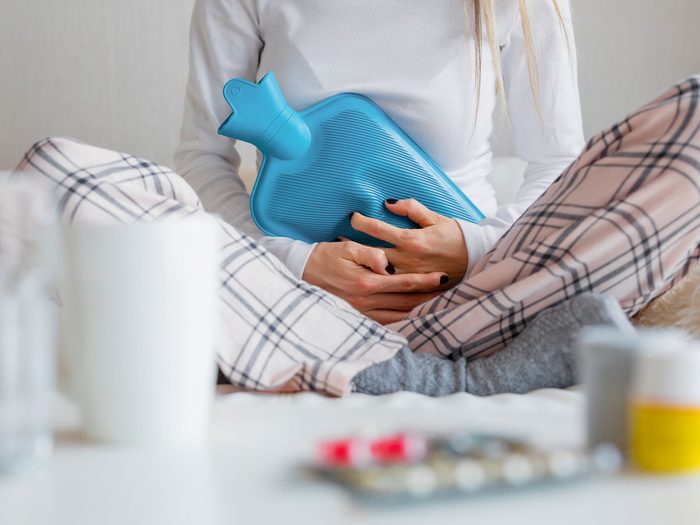
Looking for relief from your menstrual cramps?
In general, women who are post-puberty and pre-menopause will get their period on a monthly basis. For some, this means inevitable period pain filled with aches and discomfort. An estimated 84 percent of women experience painful menstrual cramps—dysmenorrhea—with their period, according to a 2015 study of women aged 18 to 25 in the Journal of Family Medicine and Primary Care. A family history of painful periods, bleeding duration, and the presence of clots are considered risk factors for having dysmenorrhea.
For relief, many women turn to heating pads or over-the-counter painkillers, such as ibuprofen or naproxen, but sometimes these aren’t enough to alleviate the pain. Read on to learn the eight unexpected things that may help you better cope with menstrual cramps.
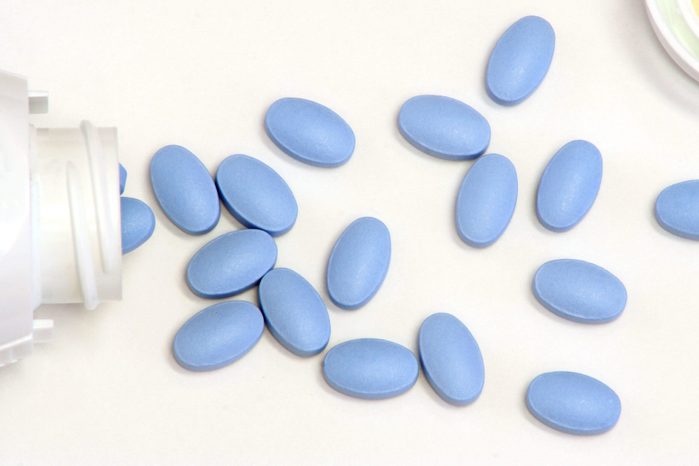
Vaginal “Viagra”
The ingredient in the little blue pill that helps some men with erectile dysfunction may also help some women with period pain. In a small 2013 study, published in Human Reproduction, researchers found the 100 milligrams of vaginal sildenafil citrate—main ingredient in Viagra—alleviated menstrual cramps in a small group of women, aged 18 to 35 years, compared with the placebo group. In women, vaginal sildenafil citrate is intended by dilating blood vessels near the uterus to ease cramps. The researchers note due to their small sample size, larger studies of longer duration are needed to confirm the findings.
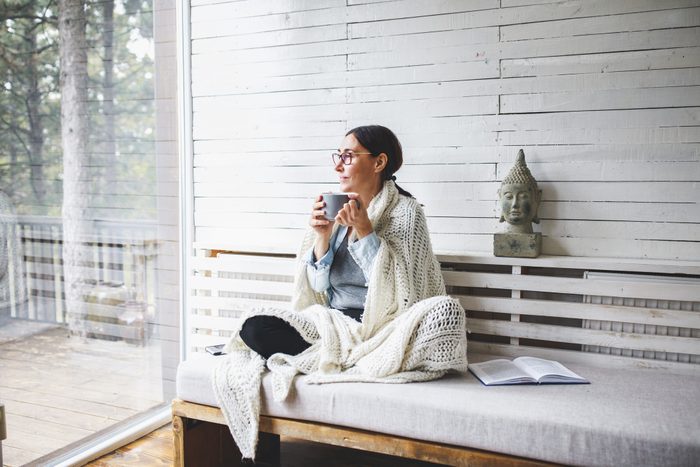
Sip on red raspberry leaf tea
Red raspberry leaf extract has been used for reproductive-region pain for centuries. Raspberry leaves have both a high mineral content, which helps the uterus muscles relax, as well as high levels of fragarine, which helps strengthen the entire pelvic floor and uterus, according to a study in Planta Medica. The extract is best known for helping make childbirth easier and faster, but by the same mechanism, it may also help ease cramps. Plus, the herbal supplement could help decrease menstrual bleeding, which may reduce the amount of period cramping women experience, says Jaimie Maines, MD, assistant professor of obstetrics and gynecology at Penn State Health Milton S. Hershey Medical Center in Hershey, Pennsylvania. (Also, certain teas are proven to help with weight loss.)
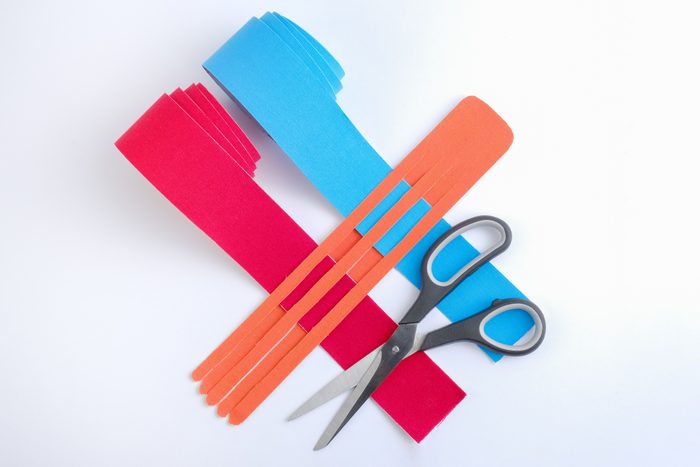
Tape up your tummy
Kinesiology tape, a favourite among fitness enthusiasts, is an elastic cotton strip that is applied over injured or sore muscles to increase circulation and improve range of motion. It’s traditionally used to ease muscle and joint aches enough to power through a race or workout, but some studies suggest it can help during your period as well. A 2013 study in the Journal of Physical Therapy Science found that taping near your pelvic region before you start your period and during menstruation can help relieve menstrual pain. The tape works by stimulating the sensory receptors in your skin, thereby helping the muscles relax to ease cramps.
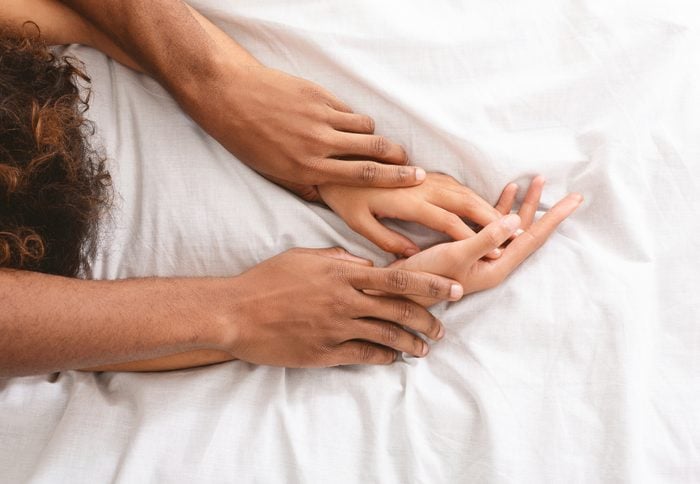
Get intimate
It’s tempting to curl up in bed when you have menstrual cramps, but getting your body to move may actually help improve cramping, Dr. Maines says. And that includes getting your heart rate up during sex. “Orgasms release endorphins, which will help make menstrual cramps less bothersome, as well as increase blood flow to the genital area, which can help relieve pain,” according to Dr. Maines.
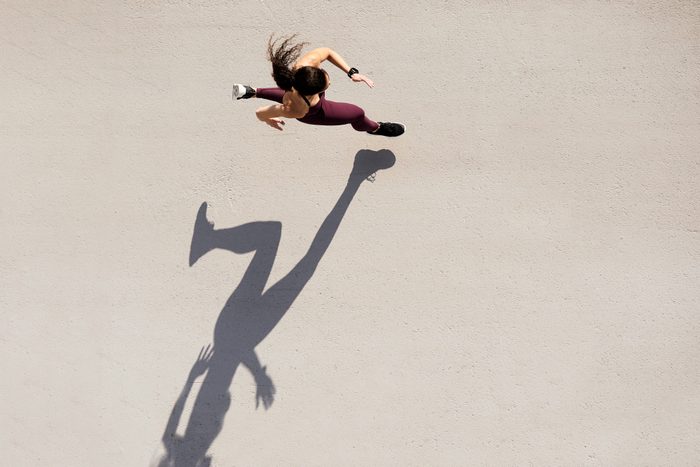
Exercise
Physical activity, like exercise, is a way to get your body moving while reducing period pain. With any type of aerobic exercise, the body is pumping more blood, which helps to release endorphins and counteract the prostaglandins—hormone-like substances involved in pain and inflammation that trigger period pain—to ease cramps. A 2018 clinical trial of 70 students with primary dysmenorrhea, published in the Journal of Education and Health Promotion, found after eight weeks of aerobic exercise, students saw an improvement in period pain compared to the control group. (See the best exercises for easing period pain.)
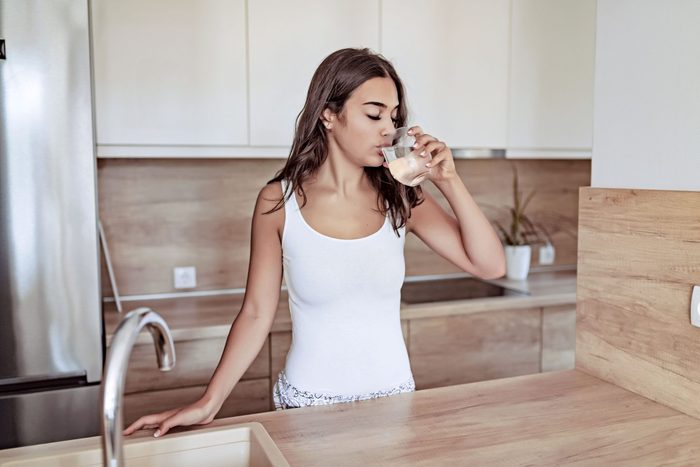
Hydrate
Your psoas muscles—which wraps from your lower spine, around the front and down to the brim of the lower pelvis—are often a contributing factor to your monthly period pain. “This muscle modulates a lot of the stress and tension of daily life in order to protect our nervous system, but this taxation makes the psoas muscles dry and tensile,” explains Eden Fromberg, MD, owner and founder of Holistic Gynecology New York in New York City. “Because the nerves from the uterus literally perforate through these muscles, they become irritated and reactive, cranky, and crampy.” The best remedy? Hydration, which will help reduce that tension and therefore menstrual cramping. (To stay hydrated, check out these flavoured water recipes that are beyond refreshing.)

Ditch your heels
“High heels cause significant postural and pelvic instability, displace the uterus, and create even more psoas muscle stress and tension,” says Dr. Fromberg. Also, walking in high heels can alter your gait, according to a 2018 study in Gait & Posture. Use of high heels can lead to major changes in the “rollover function of the feet, the ankle and knee joints and the lower back,” the researchers noted, while step length and balance may also be compromised. During your period, switch to flats or minimalist footwear with flexible soles for a week, Dr. Fromberg suggests.
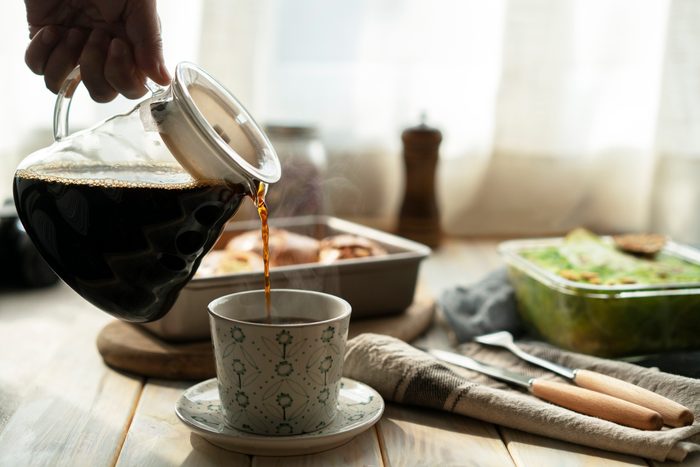
Nix caffeine
Caffeine may be your go-to pick-me-up in the morning, but forgoing it during your period may actually help you feel better: “Caffeine constricts blood vessels, so it may actually worsen menstrual cramping,” says Dr. Maines. That means cutting back on tea, coffee, soda, and even chocolate.
Medically reviewed by Tia Jackson-Bey, MD.
Period gone wonky? Next, find out if you have one of these menstrual disorders.
